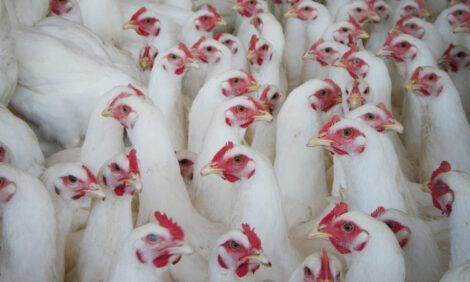



Effect of Ventilation on Distribution, Concentration and Emission of Air Pollutants in a Manure-belt Layer House
A new study from China indicates that it is difficult to control both poultry house environment and pollutant concentrations using only ventilation.Air pollutants from poultry operations pose a potential threat not only for bird health but also for the environment outside, according to Gao Yu Peng of Northwest A&F University and co-authors there and at Beijing Normal University.
Ventilation is believed to be an effective way of regulating house environment, they explain in a paper in the current issue of Journal of Applied Poultry Research.
To improve understanding of ventilation effects on house environment, distributions, concentrations and emissions of ammonia, carbon dioxide, total suspended particulates and "particulate matter 2.5" (i.e. fine particles with a diameter of 2.5μm or less) were investigated in a manure-belt layer house. The researchers used nine ventilation stages (VS) with different ventilation rates.
Distributions of pollutants were assessed visually using contour plots and coefficient of variation. Emission rates of pollutants were estimated by multiplying VT by concentration.
Spatial distributions of the four pollutants were not homogeneous throughout the house, regardless of ventilation stage, and increased ventilation rate aggravated the spatial disparity.
Within the house, pollutant concentrations were maintained below harmful levels during all nine ventilation stages.
Ventilation, as expected, can decrease pollutant concentrations. However concentrations of ammonia and carbon dioxide did not decrease proportionately to increased ventilation rate. The highest emission rates of four pollutants were observed during VS1, a stage with maximum ventilation, which reflected ventilation rate as a key factor determining emission rate.
The study indicated that it is difficult to balance house environment and control pollutant concentrations depending only on ventilation, concluded Gao and co-authors.
They added that other factors – such as temperature, humidity, manure handling, bird management and ventilation system design – should be considered in order to control air pollutants from poultry operations.
Reference
Wang Z.P., T. Gao, Z.Q. Jiang, Y.N. Min, J.X. Mo and Y.P. Gao. 2014. Effect of ventilation on distributions, concentrations, and emissions of air pollutants in a manure-belt layer house. J. Appl. Poult. Res. 23(4): 763-772. doi: 10.3382/japr.2014-01000
January 2015











